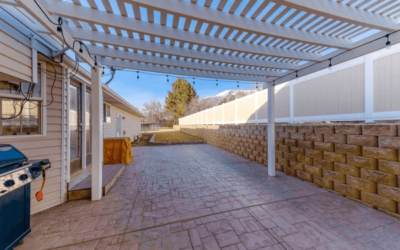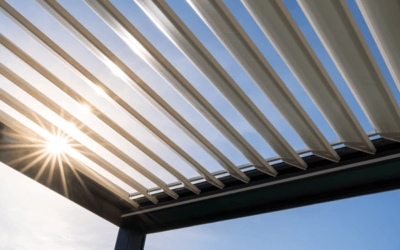What is Brick and How Does It Work as Insulation?
Brick is a traditional building material that has been widely used for roofing and wall coverings across the globe. Made from shaped clay that is fired in specialized kilns, bricks provide strength and durability. One of the main reasons homeowners and builders favor brick is its insulating properties, which effectively help regulate indoor temperatures.
Insulating Properties of Brick
Bricks are renowned for their natural thermal insulation capabilities, thanks to the air pockets within their structure. This design helps reduce heat transfer, making spaces more comfortable year-round. Additionally, brick reflects sunlight, contributing to cooler indoor temperatures during the summer months.
How Brick Functions as Thermal Insulation
When properly installed, brick creates an air barrier between the exterior and interior surfaces. This air layer enhances insulation efficiency, minimizing excess heat during the summer and retaining warmth in the winter. To maximize the benefits of bricks as insulators, it’s important to have them installed by professionals and consider supplementary insulating materials when necessary.
Practical Applications of Brick as Insulation
In modern construction and renovations, integrating brick with other insulating materials can significantly enhance its performance. It’s commonly employed in external walls and roofing to provide added protection against weather fluctuations while helping to lower energy consumption. Furthermore, brick can enrich the architectural aesthetic, offering a timeless yet contemporary look to any building.
Comparing Brick to Other Insulation Methods
When it comes to insulating external rooms in homes, brick stands out as a preferred choice for many due to its effective insulation properties. However, providing a clearer picture involves comparing brick to alternative insulation materials available on the market.
Foam Insulation vs. Brick
Foam insulation is a well-known method for insulating roofs and walls, recognized for its efficiency in maintaining moderate building temperatures. The primary difference between foam and brick lies in brick’s ability to provide both thermal and moisture insulation, whereas foam excels in thermal insulation alone without water resistance.
Rock Wool Insulation Compared to Brick
Rock wool is celebrated for its soundproofing ability as well as its thermal insulation qualities. Despite these advantages, brick outshines in withstanding severe weather conditions such as heavy rain and intense sun exposure over time, while rock wool may require periodic replacement or maintenance to maintain its effectiveness.
Plastic Insulation vs. Brick
Plastic insulation options, like polystyrene and polyurethane, offer a lightweight and economical solution for insulating buildings. However, these materials often lack the strength and durability of brick, which not only reinforces the structural integrity of a building but also extends its lifespan. Moreover, brick provides superior sound insulation compared to plastic alternatives.
The Best Ways to Utilize Brick for Water Resistance in Homes
Benefits of Using Brick in External Rooms
Employing brick in outdoor spaces is among the top choices for insulation and protection, thanks to a range of valuable benefits this material offers.
Enhancing Thermal Insulation
Brick significantly improves thermal insulation in external rooms, reducing the need for heating and cooling systems. Its ability to reflect sunlight during summer while retaining warmth in winter makes it a smart investment for energy efficiency.
Increasing Durability and Strength
Brick materials boast high strength and durability, allowing them to last for extended periods without needing constant maintenance. This resilience makes it an ideal option for external rooms exposed to various weather elements.
Enhancing Aesthetic Appeal
In addition to practical benefits, brick also adds visual appeal and elegance to external rooms. Available in various colors and finishes, brick materials enable designers and homeowners to select styles that enhance their personal taste and overall home aesthetics.
Tips for Choosing the Right Brick for Insulation
When considering brick as a solution for insulation in an external room, several key tips can help ensure you select the right type. These recommendations will help you maximize the insulating properties of brick and achieve optimal efficiency.
Evaluate the Insulative Properties of Brick
It’s essential to consider the insulative characteristics of different types of bricks. Some varieties offer better thermal insulation due to their materials and construction. Look for bricks with a high insulation rating to guarantee efficient temperature management in your space.
Ensure Brick Durability and Weather Resistance
Confirming that the brick you choose possesses high durability and the ability to withstand harsh weather conditions—such as heavy rain, wind, and temperature fluctuations—is crucial. Quality bricks ensure that you won’t need frequent replacements or maintenance, enhancing long-term insulation effectiveness.
Select the Right Color and Design
While functionality is the foremost factor to consider when selecting bricks, color and design significantly impact the aesthetic aspect of your home. Choose colors and designs that complement the exterior style of your house, keeping in mind how they might affect heat absorption or reflection, as these factors can influence thermal insulation efficiency.
User Experiences and Opinions on Brick Insulation
When discussing user experiences and opinions regarding using brick for exterior insulation, a variety of testimonials highlight diverse viewpoints. These insights illustrate the effectiveness of brick in providing robust and lasting insulation solutions.
Satisfaction with Insulation Quality
Many users express complete satisfaction with the insulation quality offered by brick, as it helps maintain a stable indoor temperature throughout the year. Users note how brick acts as an efficient barrier against excessive heat in summer and harsh cold in winter, leading to reduced heating and cooling costs.
Experiences with Longevity
Numerous users confirm that brick not only provides excellent insulation but also boasts a long lifespan. Several experiences indicate that brick maintains its effectiveness and appearance for decades without requiring ongoing maintenance, making it a worthwhile investment in the long term.
Feedback on Design and Visual Appeal
One aspect that users frequently praise is the wide range of designs and colors available in bricks, allowing for personalized aesthetic choices. Many commend how brick enhances the overall appearance of buildings while simultaneously providing effective exterior insulation.



